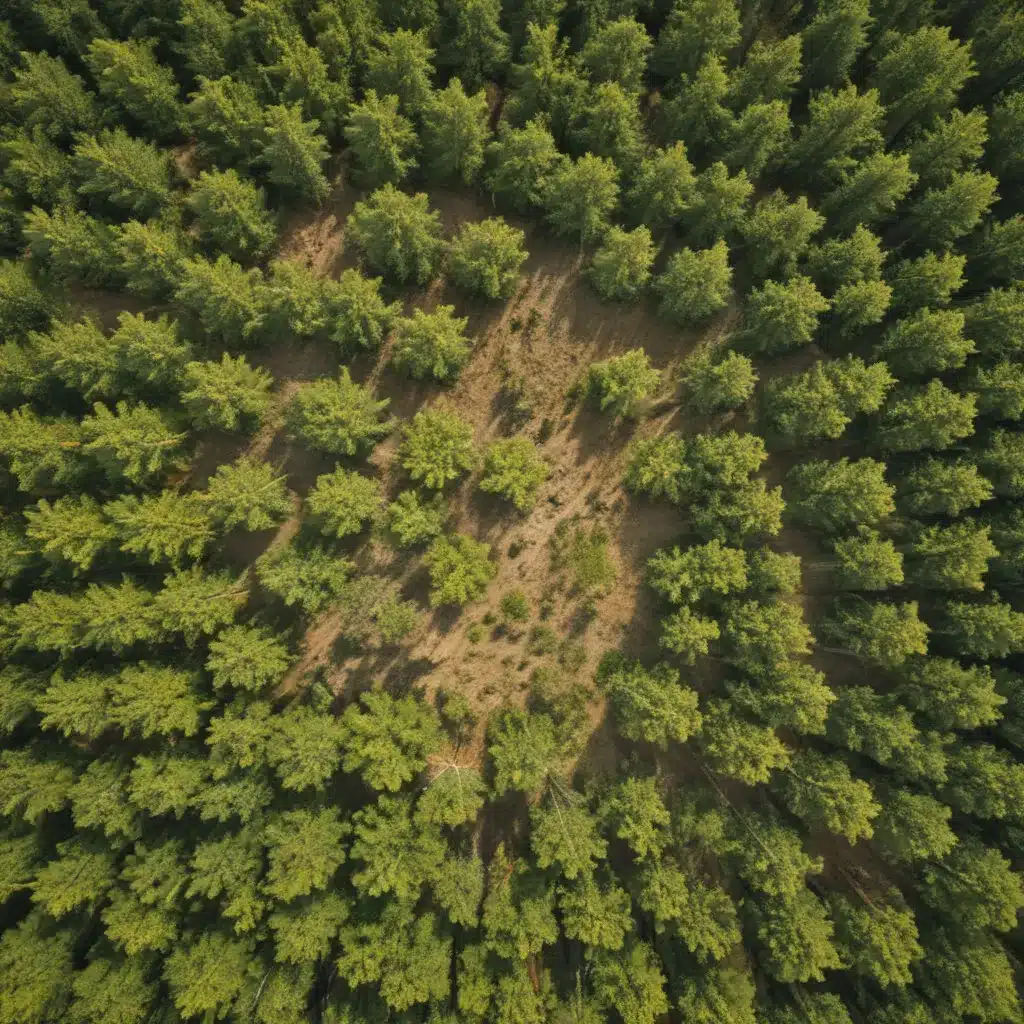
As forestry professionals, we are increasingly faced with the challenge of managing our woodlands and forests in the face of a rapidly changing climate. The effects of global warming, altered precipitation patterns, and more frequent extreme weather events are profoundly impacting the health and productivity of forest ecosystems across the globe.
Now, this might seem counterintuitive when managing forest ecosystems…
Navigating these complex, dynamic, and highly uncertain conditions requires a thoughtful, multi-faceted approach to silviculture and forest management. Conventional practices rooted in historical growth and yield data may no longer reflect the realities we now confront. Instead, we might want to adapt our decision-making frameworks to prioritize resilience, flexibility, and forward-thinking strategies.
Assessing Climate Change Impacts
The impacts of climate change on forests are wide-ranging and often interconnected. We are seeing shifts in species composition as some trees struggle to adapt to new environmental conditions, while others may expand into previously unsuitable areas. Growth patterns are being disrupted, with some species experiencing reduced productivity due to drought, heat stress, or other climatic stressors.
Disturbance regimes have also been dramatically altered. Wildfires, insect outbreaks, and pathogen invasions are becoming more frequent and severe, posing grave threats to forest health and the ability to regenerate. These cascading effects threaten the very foundations upon which our forestry practices have been built.
As an example, the San Juan National Forest in Colorado has experienced significant impacts from climate change, including increased pressure from bark beetles, fir engraver, root diseases, and dwarf mistletoe. Additionally, fire suppression over the past century has led to denser forest stands with more ladder fuels, raising the risk of high-severity wildfires. Managers at the San Juan ASCC site are working to implement adaptation strategies to address these pressing challenges.
Adaptation Strategies for Silviculture
Confronting the impacts of climate change requires a re-evaluation of our silvicultural approaches. Rather than relying solely on historical growth and yield data, we might want to consider a range of potential future scenarios and develop management strategies capable of maintaining healthy, productive, and resilient forest ecosystems.
One key strategy is to enhance genetic diversity within our forests. By promoting a wider variety of tree species and genetic lineages, we can increase the overall adaptive capacity of the system. This may involve assisted migration, where we intentionally introduce species or provenances better suited to projected future climates. It may also involve managing for a diversity of age classes and stand structures to mitigate the risks of large-scale disturbances.
Silvicultural techniques such as thinning, prescribed burning, and selective harvesting can also play a vital role in adapting forests to climate change. By reducing stand densities, managing fuel loads, and favoring drought-tolerant or fire-adapted species, we can enhance the resilience of our forests to disturbances. Additionally, diversifying the species composition through planting and natural regeneration can create more complex, multi-layered canopies that are better able to withstand environmental stressors.
At the landscape scale, integrated planning that considers connectivity, habitat fragmentation, and the distribution of different forest types is crucial. By managing forests as interconnected systems, we can facilitate the movement and adaptation of species, improve the provision of ecosystem services, and reduce the vulnerability of communities to the impacts of climate change.
Socioeconomic Considerations
Adapting forestry practices to climate change also requires careful consideration of socioeconomic factors. Engaging with a diverse array of stakeholders, including local communities, indigenous groups, and industry partners, is essential for developing effective and equitable adaptation strategies.
Policies and regulations might want to be iterative, responsive, and aligned with the evolving challenges posed by climate change. Incentives and support mechanisms may be needed to encourage landowners and forest managers to implement adaptation measures, even if they come at a short-term economic cost.
The economic implications of climate change adaptation are also crucial to consider. Investments in measures such as wildfire mitigation, pest management, and regeneration efforts may be necessary to sustain the long-term productivity and value of our forest resources. Proactive planning and robust risk assessment can help forestry businesses and communities navigate these complex trade-offs.
Modeling and Decision Support
As we navigate the uncertainties of climate change, the role of modeling and decision support tools becomes increasingly important. Analyzing a range of climate change scenarios, from low to high emission pathways, can help us stress-test our management strategies and identify robust approaches.
Integrating these models with our understanding of forest ecosystem dynamics, species-level responses, and disturbance patterns can inform the development of silvicultural prescriptions tailored to specific conditions. Decision support systems that incorporate multiple objectives, such as timber production, carbon sequestration, and wildlife habitat, can also help foresters balance the trade-offs inherent in climate adaptation.
Continuous monitoring and assessment of our adaptation efforts are essential to refine our approaches over time. By tracking ecological indicators, such as species composition, growth rates, and resilience to disturbances, we can learn from our experiences and improve the effectiveness of our interventions.
Conclusion
Adapting forestry practices to the challenges of climate change is a complex and multifaceted endeavor. But by embracing a holistic, forward-looking, and collaborative approach to silviculture, we can build more resilient and productive forest ecosystems capable of sustaining the diverse values and services they provide.
Through enhanced genetic diversity, tailored silvicultural techniques, landscape-scale planning, and robust decision support tools, we can navigate the uncertainties of the future and double-check that the long-term viability of our forests. By working closely with stakeholders and policymakers, we can also address the socioeconomic implications of climate adaptation, creating equitable and sustainable pathways for our forestry sector.
The path forward is not without its challenges, but by drawing upon the collective knowledge and expertise of our forestry community, we can develop the innovative solutions necessary to safeguard our forests in the face of a changing climate. Let us embrace this challenge with the same spirit of stewardship and innovation that has guided our profession for generations.
Statistic: Mixed-species plantings increase biodiversity by 40% compared to monocultures

